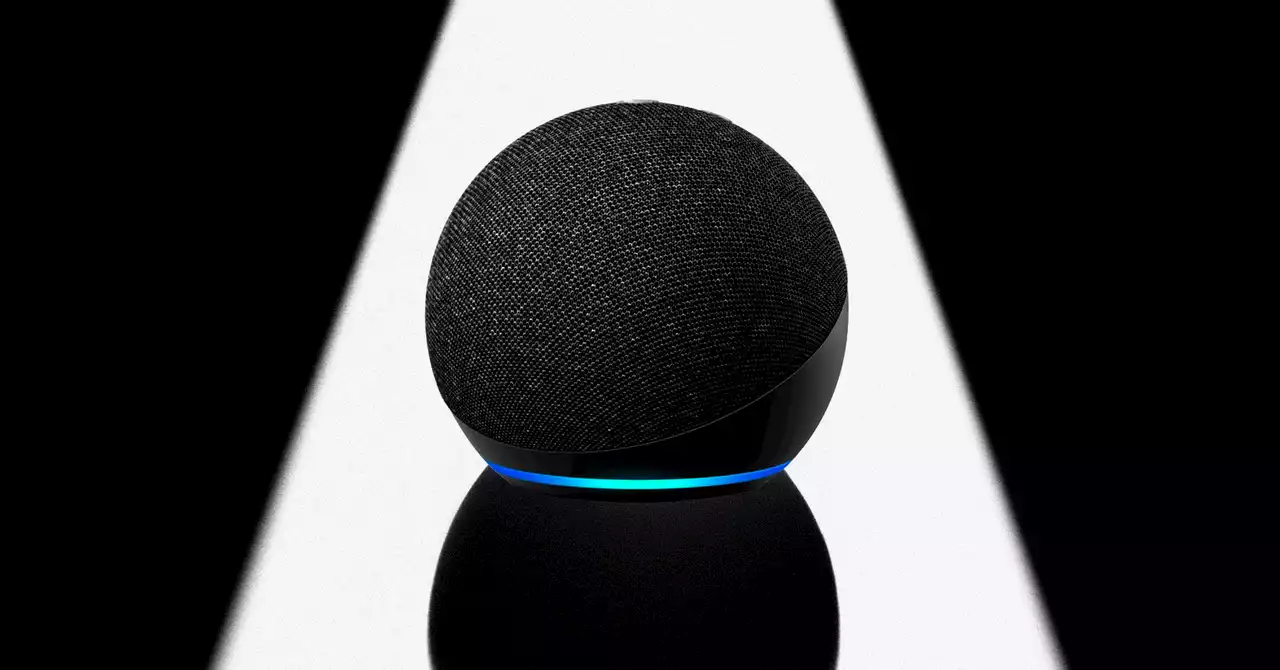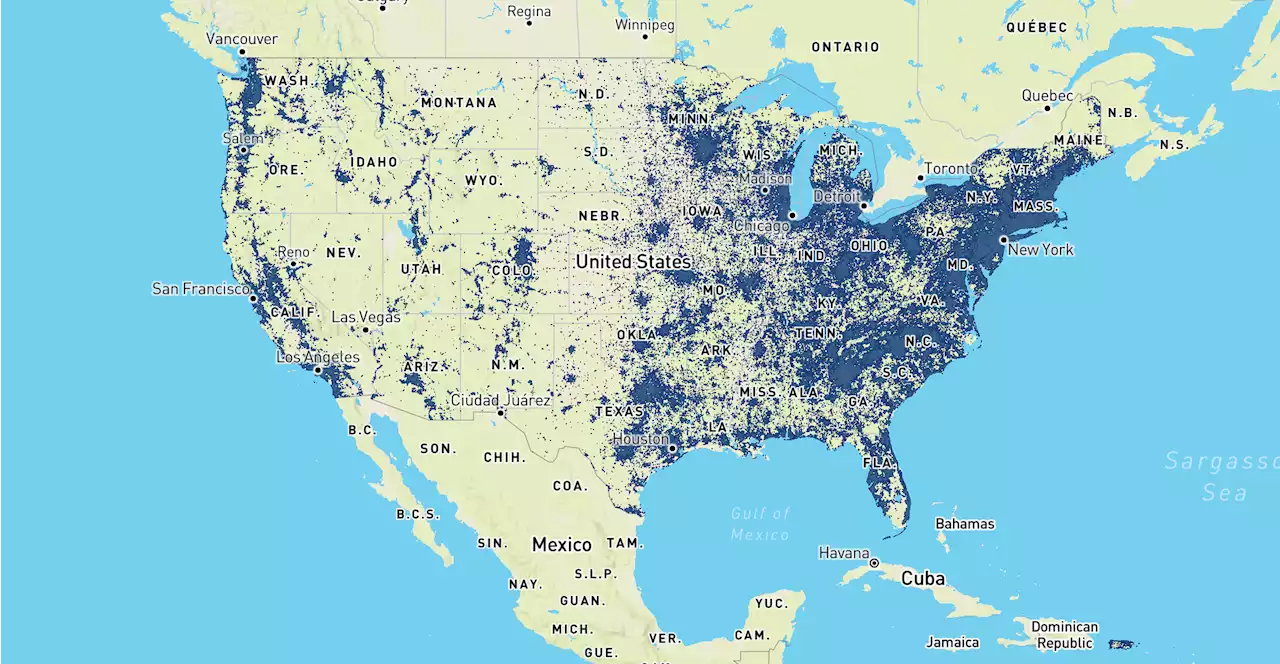Amazon Sidewalk is a low-power network that helps keep your smarthome devices online, and Amazon has officially revealed its gigantic coverage map.
Amazon Sidewalk — a shared network that helps smart home devices stay connected — first launched in 2021 and has been steadily growing larger over the past few years. In fact, the size of Amazon Sidewalk might surprise you, as the network’s first coverage map shows a massive blanket that Amazon says covers 90% of the U.S. population.
The recently launched interactive map makes it clear that Amazon didn’t forget about Sidewalk after releasing it two years ago. It’s a service that doesn’t often step into the spotlight, but one that’s obviously been high on the priority list over at Amazon HQ. The interactive map coincides with an announcement that Sidewalk is officially open to all developers, allowing them to integrate their products with the network and enhance the already impressive coverage map.
Related Videos “Many types of connected devices have been limited by the range of Wi-Fi and the cost of cellular technology, which has hindered the ability to connect devices like environmental sensors, leak detectors, and smart locks,” said Dave Limp, senior vice president of Amazon Devices & Services, in a statement. “Sidewalk is designed to provide a secure, low-cost way to invent and connect a whole new range of devices, and we can’t wait to see what developers build.
Amazon Sidewalk’s current coverage map is the result of a collaboration with select developers that allowed only a handful of smart home products to produce and broadcast a low-powered signal for other smart home devices to connect with. But now that the floodgates have been opened and any developer can use Sidewalk, expect to see that coverage map grow exponentially in the coming years.
If you’ve got the technical prowess to tinker with Sidewalk, you can request a free Sidewalk devkit over on the official Amazon website.
Deutschland Neuesten Nachrichten, Deutschland Schlagzeilen
Similar News:Sie können auch ähnliche Nachrichten wie diese lesen, die wir aus anderen Nachrichtenquellen gesammelt haben.
 Amazon has just opened up its Sidewalk network and it’s giganticThe free-to-access IoT network could help bring billions of connected devices online — if you’re willing to share.
Amazon has just opened up its Sidewalk network and it’s giganticThe free-to-access IoT network could help bring billions of connected devices online — if you’re willing to share.
Weiterlesen »
 Amazon Sidewalk Is the Sleeping Giant in Your NeighborhoodToday, Amazon Sidewalk opens up to all developers. Now anyone who wants to make their smart-home gadget work as an endpoint in Amazon's public mesh network—enabling it to both provide a wireless signal and slurp up nearby bandwidth when needed—can do so.
Amazon Sidewalk Is the Sleeping Giant in Your NeighborhoodToday, Amazon Sidewalk opens up to all developers. Now anyone who wants to make their smart-home gadget work as an endpoint in Amazon's public mesh network—enabling it to both provide a wireless signal and slurp up nearby bandwidth when needed—can do so.
Weiterlesen »
 I can't believe how much of the U.S. Amazon's Sidewalk network coversAmazon has announced that it is opening up its Sidewalk IoT network to third-party developers in the United States.
I can't believe how much of the U.S. Amazon's Sidewalk network coversAmazon has announced that it is opening up its Sidewalk IoT network to third-party developers in the United States.
Weiterlesen »
 Ripple and Digital Euro Association Unveil CBDC and Digital Assets WhitepaperRipple and Digital Euro Association joint work outcome unveiled to public xrp xrpsec xrparmy xrpcommunity xrpl xrpledger xrpthestandart ripple ripplex $xrp
Ripple and Digital Euro Association Unveil CBDC and Digital Assets WhitepaperRipple and Digital Euro Association joint work outcome unveiled to public xrp xrpsec xrparmy xrpcommunity xrpl xrpledger xrpthestandart ripple ripplex $xrp
Weiterlesen »
 Driver of Tesla that jumped curb, killed man on sidewalk surrenders to police, records showA man who is facing a second-degree felony charge for failing to stop and render aid after he allegedly hit and killed a man with his Tesla has turned himself in to San Antonio police.
Driver of Tesla that jumped curb, killed man on sidewalk surrenders to police, records showA man who is facing a second-degree felony charge for failing to stop and render aid after he allegedly hit and killed a man with his Tesla has turned himself in to San Antonio police.
Weiterlesen »
 Are Your Digital Platforms Wasting Your Customers’ Time?No one wants digital tools that waste their time. We all want digital experiences to offer time well spent. People engage when smart tools understand them, their situation, and the jobs they want done. But too many companies today are still building digital platforms that waste people’s time. So, what should companies be doing differently? Instead of “moments”, focus on “modes” — the mindset and set of behaviors that people get into temporarily to get a job done; for example, we can be in work mode one moment, and mommy/daddy mode the next. When digital tools can ascertain what mode a customer is in, the intelligence of the tools grows. When people use solutions that recognize their modes, they become more empowered, feel like the tool understands their situation, and feel like their time is well spent. Companies that understand digital context can vastly increase customer engagement. To do so, they need to understand four different types of experiences their tools can yield, ranging from not-smart (technology that just wastes your time) to genius (technology that ultimately feels like time well invested).
Are Your Digital Platforms Wasting Your Customers’ Time?No one wants digital tools that waste their time. We all want digital experiences to offer time well spent. People engage when smart tools understand them, their situation, and the jobs they want done. But too many companies today are still building digital platforms that waste people’s time. So, what should companies be doing differently? Instead of “moments”, focus on “modes” — the mindset and set of behaviors that people get into temporarily to get a job done; for example, we can be in work mode one moment, and mommy/daddy mode the next. When digital tools can ascertain what mode a customer is in, the intelligence of the tools grows. When people use solutions that recognize their modes, they become more empowered, feel like the tool understands their situation, and feel like their time is well spent. Companies that understand digital context can vastly increase customer engagement. To do so, they need to understand four different types of experiences their tools can yield, ranging from not-smart (technology that just wastes your time) to genius (technology that ultimately feels like time well invested).
Weiterlesen »
